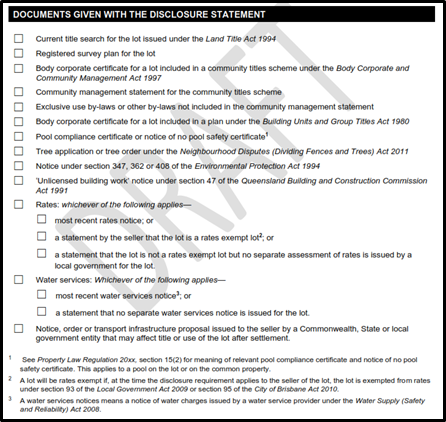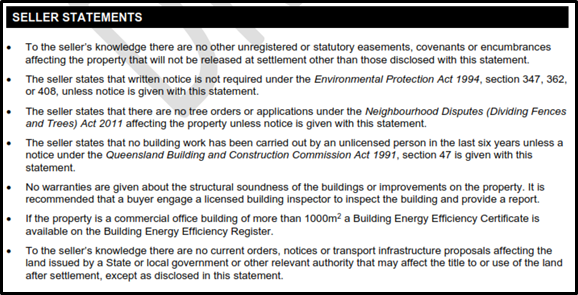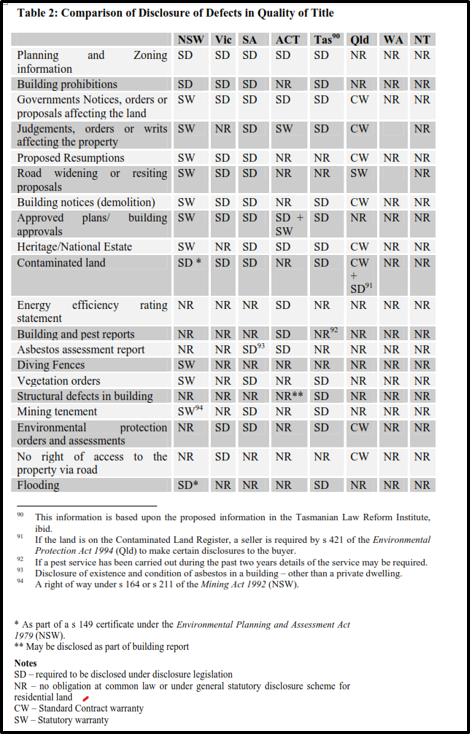27 February 2024
Game, Set, Match! Property Buyers: One; Sellers: Love
Written by Kristina Stevens
Just like Sinner, the newcomer, cleaned up the Aussie Open, so too are Queensland buyers poised to be acing the game now that their search costs have been served to sellers.
The proposed new Seller Disclosure Statement (“SDS”) under the new Property Law Act (Qld) 2023 (“PLA”) and its regulations (yet to be promulgated) provide that a SDS must be prepared by a seller and given to a buyer before the buyer enters into a contract for the sale of a lot (exceptions apply).
Presently, in addition to common law rights and specific legislative protections, the REIQ contract contains contractual warranties by a seller (for example – warranties with respect to the existence of obligations under environmental legislation) and it is the buyer’s obligation to undertake searches and make enquiries to ensure that those warranties made by the seller are true. Using the above example, unless a buyer undertakes certain searches, they will have no way of knowing whether or not the property is affected by undisclosed “notifiable activities”. These are activities that have the potential to cause contamination to land, for example, asbestos disposal. (Intensia Pty Ltd v Nichols Constructions Pty Ltd, 2018). Only if a buyer conducts the appropriate search (at their cost) and uncovers that a seller’s warranty has been breached, may the buyer be granted a termination right under the contract.
Imminently with the new regulations, the seller, prior to a buyer even signing a contract, will have to pay for, provide and attach current searches to a SDS (See Fig. 1).

Figure 1 Documents (to be) Given with the Disclosure Statement from Draft Seller’s Disclosure Notice (Queensland Government, 2022)
Additionally, a seller will also have to provide “Seller Statements” (see Fig. 2) as part of the SDS with respect to several matters, including: easements, written notices under environmental legislation, tree orders, dividing fences, unlicensed building work, building efficiency (in the case of commercial properties), and even transport infrastructure proposals.

Figure 2 Seller Statements from Draft Seller’s Disclosure Notice (Queensland Government, 2022)
What does this mean for your average Queensland investor?
According to the explanatory memorandum to the PLA, the purpose of the SDS introduction was to “to simplify and consolidate the disclosure process for sales of freehold land and empower prospective buyers to make informed decisions to purchase” (Queensland Government, 2023).
The new disclosure regime may make selling property, which is subject to certain defects in title or quality of title more difficult for sellers, but it will ensure that buyers are better protected and are making informed decisions as to whether or not to contract with a seller with respect to a certain property. By having the information up front, relevant to say, environmental protection or assessments, a buyer may elect not to proceed with signing a contract for the purchase of an affected property.
The proposed disclosure requirements of the SDS does not cover all searches a buyer should undertake and will not replace the requirement for a buyer’s solicitor to undertake their due diligence. The role of the solicitor will become even more relevant to assist buyers in discerning which searches ought to be undertaken that are not captured within a SDS.
To add to the confusion, there are extensive inconsistencies across the various Australian jurisdictions in terms of disclosure requirements (See Fig. 3 ). In the author’s opinion, there is a need for discussion regarding a nationally consistent approach to disclosure. Furthermore, it has been suggested that we should investigate using technology to enable greater coordination; even potentially, a single search portal for government information (Duncan, et al., 2017). Deploying this Australia-wide, could result in uniformity of disclosure requirements in each of its states and territories. Imagine a PEXA for searches! If this information could be accessed by buyer and seller alike for a reasonable fee, it would eliminate or at least reduce placing the financial burden on either party.

Figure 3 Jurisdiction Comparison of Defects (Christensen, Duncan, & Stickley, 2017)
Until such a national approach is applied, gone are the days, where a seller’s costs and outlays were less than a buyer’s, at least in Queensland. Not unlike the Aussie Open, under the new Property Law Act (Qld) 2023, the Seller Disclosure Statement has declared there can only be one winner, and it’s the buyer taking the big trophy home.
References
Christensen, S., Duncan, W. D., & Stickley, A. (2017). Evaluating Information Disclosure to Buyers of real estate – Useful or merely adding to the confusion and expense? Brisbane: QUT Law Journal.
Duncan, W., Christensen, S., Dixon, W., Window, M., Rivera, R., & Partridge, T. (2017). Final Report: Seller Disclosure Queensland. Brisbane: Commercial and Property Law Research Centre, QUT Law.
Intensia Pty Ltd v Nichols Constructions Pty Ltd, [2018] QCA 191 [2018] 34 QLR (Supreme Court: Court of Appeal August 17, 2018).
Queensland Government. (2022). Seller Disclosure Statement – Draft. Justice and Attorney-General, Brisbane. Retrieved from https://www.publications.qld.gov.au/ckan-publications-attachments-prod/resources/edd4dab5-d833-4a04-a22e-27809fea47f9/draft-disclosure-statement.pdf?ETag=8826626087559810ff17913cd456d7ea
Queensland Government. (2023). Property Law Bill 2023 – Explanatory Notes. Brisbane.
